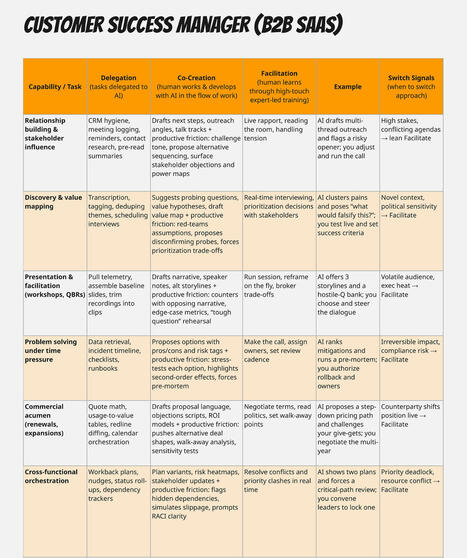The bulk of the emerging L&D model—the 90%—is about re-coupling work and learning through AI-powered performance support. In practice, this means embedding support and “productive friction” within the workflow itself rather than locating it classrooms or LMSs.
Exactly how this plays out is to TBD, but on the ground at the “bleeding edges” of L&D experimentation I already see a commitment to reducing investment in online courses and in person workshops, in favour of AI “copilots” integrated directly where work happens.
In Teams/Slack channels, docs and CRMs, AI is on hand to help employees to draft artefacts, consider alternative approaches, weigh-up decisions and retrieve information from the organization’s knowledge base using retrieval-augmented generation (RAG).
No comment yet.
Sign up to comment





 Your new post is loading...
Your new post is loading...

![[PDF] Global Learning & Skills Trends Report 2026 | Edumorfosis.it | Scoop.it](https://img.scoop.it/aP2wFGi4vC13vLhNhBdjCDl72eJkfbmt4t8yenImKBVvK0kTmF0xjctABnaLJIm9)









![[Survey] College students’ views on AI | Edumorfosis.it | Scoop.it](https://img.scoop.it/9q1Zq_eXBE3RUXTUJh3Ctjl72eJkfbmt4t8yenImKBVvK0kTmF0xjctABnaLJIm9)







![[PDF] How people use ChatGPT | Edumorfosis.it | Scoop.it](https://img.scoop.it/j28vq8a4Ky4nqebgezmbjDl72eJkfbmt4t8yenImKBVvK0kTmF0xjctABnaLJIm9)

![[CHLOE 10] Meeting the moment: Navigating growth, competition, and AI in Online Higher Education | Edumorfosis.it | Scoop.it](https://img.scoop.it/LZeJO4Q1uf0iXJSVS1qjkDl72eJkfbmt4t8yenImKBVvK0kTmF0xjctABnaLJIm9)
![[Documental] Así se inventó la Escuela: El secreto mejor guardado de la Educación | Edumorfosis.it | Scoop.it](https://img.scoop.it/9rZ0TRzCZpYH3PMt0LwjPTl72eJkfbmt4t8yenImKBVvK0kTmF0xjctABnaLJIm9)






Los defensores del 90/10 argumentan que el modelo no se trata de aprender menos, sino de aprender de manera más inteligente al definir todos los trabajos a realizar como uno de los siguientes:
Delegar (las habilidades muertas): Tareas que se pueden descargar a la IA.
Co-Crear (el 90%): Tareas que los agentes de IA bien definidos pueden aumentar y ayudar a los humanos a desempeñarse de manera óptima.
Facilitar (el 10%): Tareas que requieren un aprendizaje dirigido por humanos de alto nivel para desarrollarse.